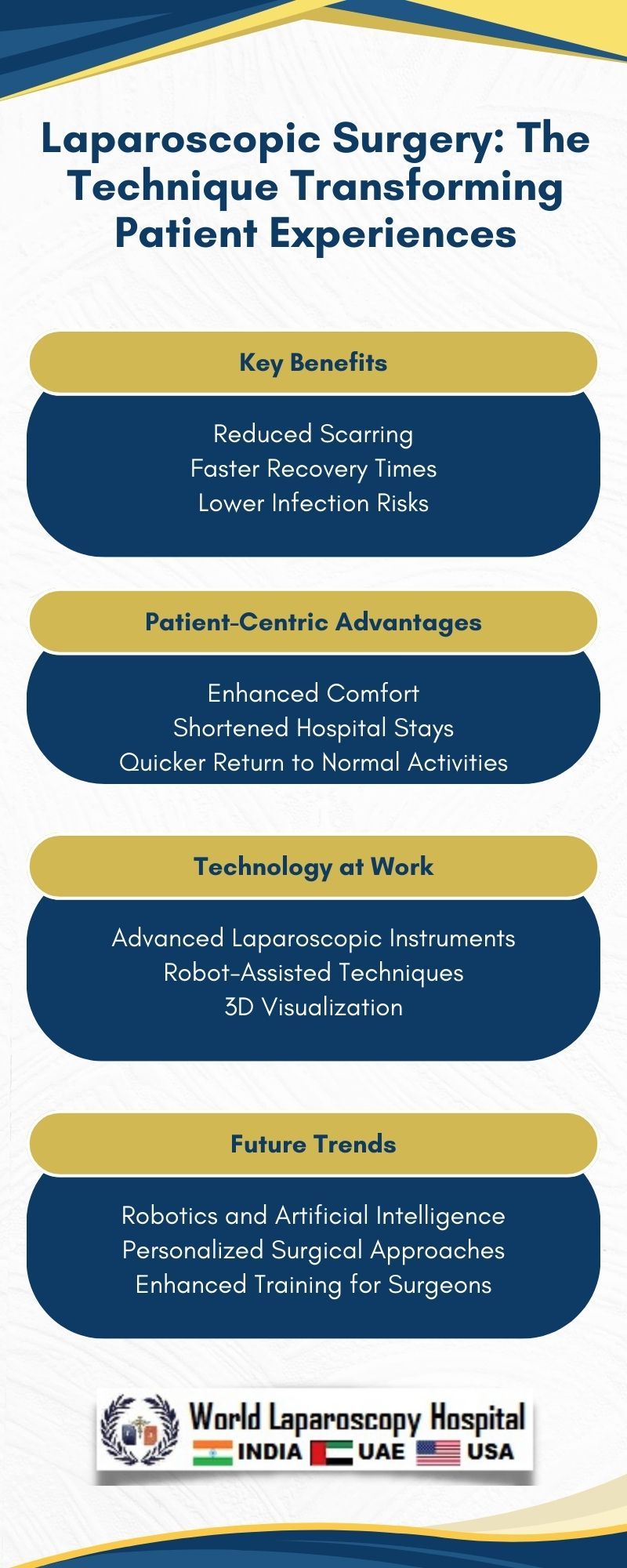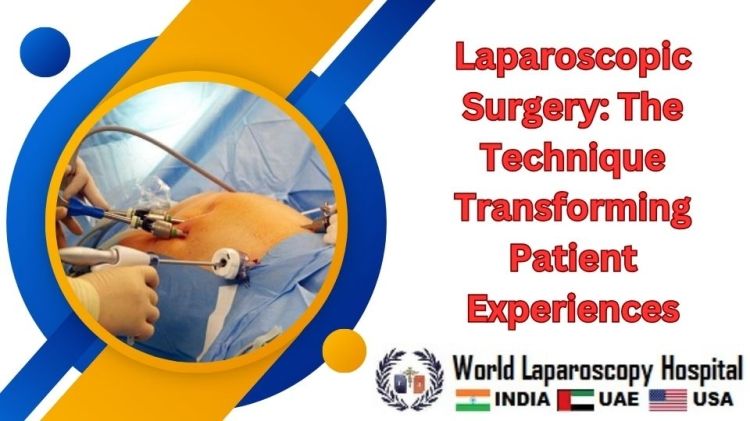Introduction:
In the ever-evolving landscape of medical advancements, laparoscopic surgery has emerged as a transformative technique, redefining patient experiences and setting new standards in surgical procedures. This minimally invasive approach, also known as keyhole or band-aid surgery, has gained widespread recognition for its remarkable impact on reducing trauma, enhancing recovery, and improving overall patient satisfaction.

Understanding Laparoscopic Surgery:
Laparoscopic surgery involves the use of small incisions and specialized instruments equipped with a camera, allowing surgeons to perform intricate procedures with unparalleled precision. The traditional open surgery, which requires larger incisions, is gradually being replaced by this innovative technique. The laparoscope provides a real-time visual feed of the internal organs, enabling surgeons to navigate through the complexities of the human body with heightened accuracy.
Advantages Over Traditional Surgery:
Reduced Trauma and Scarring:
One of the primary benefits of laparoscopic surgery is the significantly reduced trauma to the patient's body. Unlike traditional open surgery, which involves large incisions, laparoscopic procedures require only small keyhole incisions. This results in minimal tissue damage, reduced blood loss, and ultimately less scarring.
Quicker Recovery Times:
The minimally invasive nature of laparoscopic surgery translates to shorter recovery times for patients. With smaller incisions, there is less pain, reduced risk of infection, and a faster return to normal daily activities. This aspect not only contributes to patient comfort but also allows healthcare facilities to optimize resource utilization.
Shorter Hospital Stays:
Laparoscopic surgery often leads to shorter hospital stays compared to traditional surgery. Patients can recover in the comfort of their homes sooner, reducing healthcare costs and freeing up hospital resources for other critical cases. This efficiency is particularly significant in the current healthcare landscape.
Improved Cosmetic Results:
The smaller incisions in laparoscopic surgery not only minimize internal trauma but also result in improved cosmetic outcomes. Patients experience less visible scarring, contributing to enhanced satisfaction and body image post-surgery.
Applications Across Medical Specialties:
Laparoscopic surgery has transcended various medical disciplines, proving its versatility and efficacy in a wide range of procedures. Some notable applications include:
Gastrointestinal Surgery:
Laparoscopic techniques are commonly employed in procedures involving the gastrointestinal tract, such as appendectomies, cholecystectomies (gallbladder removal), and hernia repairs. The precision of the laparoscope enables surgeons to navigate intricate anatomy with unparalleled accuracy.
Gynecological Procedures:
In gynecology, laparoscopic surgery has revolutionized the approach to conditions such as endometriosis, ovarian cysts, and hysterectomies. The reduced invasiveness of the procedure is particularly advantageous in women's health, minimizing postoperative discomfort and promoting faster recovery.
Urological Interventions:
aparoscopic techniques have also found success in urological surgeries, including prostatectomies and kidney procedures. The ability to access and treat targeted areas with minimal disruption to surrounding tissues has led to improved outcomes and reduced complications.
Orthopedic Advancements:
Even in orthopedics, traditionally dominated by open surgeries, laparoscopic approaches are gaining ground. Procedures such as arthroscopy for joint surgeries showcase the adaptability and potential of laparoscopic techniques beyond their initial scope.
Challenges and Considerations:
While laparoscopic surgery has transformed the medical landscape, it is essential to acknowledge certain challenges and considerations associated with its adoption:
Training and Expertise:
Performing laparoscopic surgery requires specialized training for surgeons. The learning curve is steep, and proficiency in this technique demands a commitment to continuous education and skill development.
Cost Considerations:
While laparoscopic surgery can lead to cost savings in terms of reduced hospital stays and quicker recovery, the initial investment in specialized equipment and training may present financial challenges for healthcare institutions.
Patient Selection:
Not all patients and conditions are suitable for laparoscopic procedures. Factors such as the patient's overall health, the complexity of the surgery, and the surgeon's expertise must be considered when determining the appropriateness of this technique.
Future Directions and Innovations:
The evolution of laparoscopic surgery continues with ongoing research and technological advancements. Some key areas of development include:
Robot-Assisted Laparoscopy:
The integration of robotic systems in laparoscopic surgery allows for even greater precision and control. Surgeons can remotely manipulate robotic arms with enhanced dexterity, expanding the scope of minimally invasive procedures.
Enhanced Imaging Technologies:
Continued improvements in imaging technologies, such as high-definition cameras and 3D visualization, contribute to a more detailed and immersive surgical experience. These innovations further empower surgeons to navigate complex anatomical structures with unprecedented clarity.
Miniaturization of Instruments:
Advancements in instrument design are focusing on miniaturization, enabling surgeons to perform increasingly intricate procedures through even smaller incisions. This not only enhances the cosmetic outcomes but also broadens the applicability of laparoscopic techniques.
Integration of Artificial Intelligence:
The integration of artificial intelligence (AI) in laparoscopic surgery holds promise for optimizing decision-making during procedures. AI algorithms can analyze real-time data, assist in identifying anomalies, and provide valuable insights to surgeons, ultimately enhancing surgical outcomes.
Conclusion:
Laparoscopic surgery stands as a testament to the remarkable strides made in modern medicine. Its impact on patient experiences, from reduced trauma and quicker recovery times to improved cosmetic results, is undeniable. As the field continues to evolve with technological innovations and increased adoption, the future holds exciting possibilities for further enhancing the efficacy and accessibility of laparoscopic techniques across diverse medical specialties. Embracing this transformative approach not only benefits individual patients but also contributes to the broader evolution of healthcare practices and outcomes.
